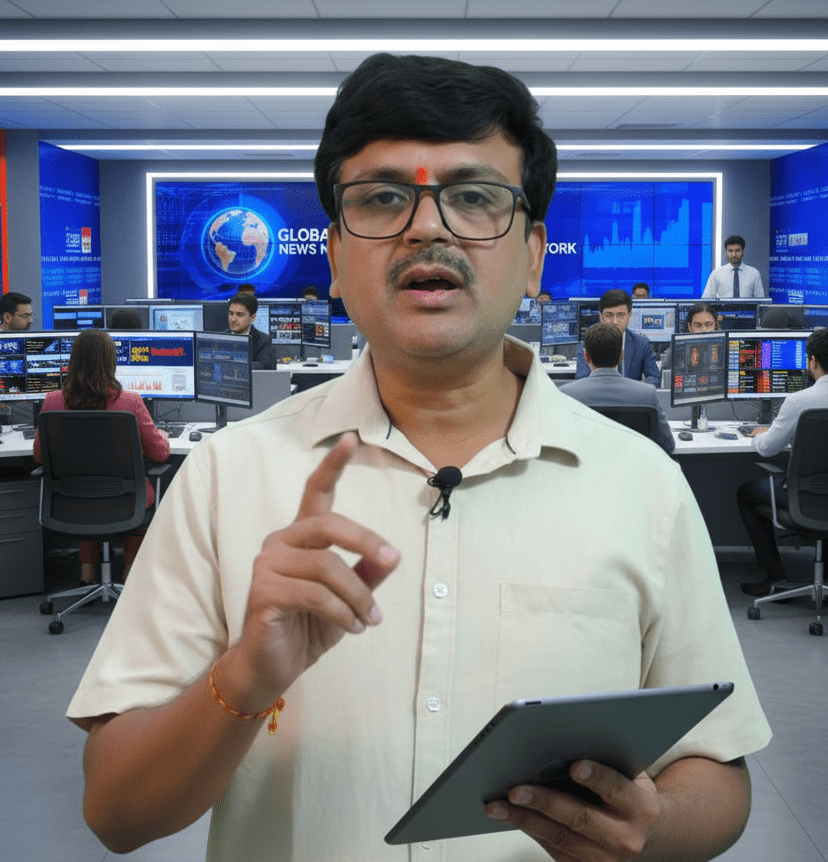Surya Grahanam 2025: The Partial Solar Eclipse on September 21 That Lights Up the Southern Skies
Hey there, sky lovers! If you’re wondering about the September 21 2025 partial solar eclipse—also known as Surya Grahanam in many cultures—you’re in for a treat. This celestial event, where the Moon playfully nibbles at the Sun’s edge, creating a stunning crescent glow, is the last solar eclipse of 2025. Happening just before the autumn equinox, it’s visible across New Zealand, parts of eastern Australia, the South Pacific islands, and even Antarctica. While folks in India and most of the Northern Hemisphere will miss the live show, you can catch it online or dive into its astrological vibes. In this chatty guide, we’ll break down everything from timings and safe viewing tips to why this Surya Grahanam feels like a cosmic reset button. Stick around—you might just find yourself planning a spontaneous trip Down Under!

What Exactly Is Happening During This Partial Solar Eclipse?
Picture this: It’s Sunday evening in the UTC world, and the Moon slides right in front of the Sun, but not all the way. That’s the magic of a partial solar eclipse. On September 21, 2025, the Moon’s shadow—called the penumbra—grazes Earth’s southern edges, blocking up to 86% of the Sun in the best spots. It’s not the dramatic total blackout like some eclipses, but oh boy, that crescent Sun rising like a fiery smile? Pure poetry.
This isn’t just any random alignment; it’s the finale to 2025’s eclipse season. We kicked things off with a total lunar eclipse on March 13-14—remember that blood moon glow?—followed by a partial solar one on March 29. Then, a supercharged total lunar eclipse lit up September 7 skies for billions. Now, this partial solar eclipse caps it off, reminding us how the Earth, Moon, and Sun dance in perfect sync every few years. Why partial? The Moon’s a tad too far from Earth this time, so its shadow doesn’t quite blanket the whole Sun. But hey, partial doesn’t mean boring—it’s like the universe teasing us with a sneak peek.
Fun fact: Eclipses like this happen because of something called the Saros cycle, a fancy term for repeating patterns every 18 years. This one’s part of Saros 154, which has been delivering partial shows since the 11th century. If you’re into the science, the maximum eclipse hits at 19:41 UTC, when the Moon covers the most Sun real estate over a quiet patch of the South Pacific Ocean. It’s deep enough in places like New Zealand’s Stewart Island to feel almost total, with 80% obscuration turning sunrise into a surreal light show.

Where Can You Catch This Surya Grahanam Live? Visibility Breakdown
Alright, let’s talk locations because not everyone’s getting the front-row seat. This partial solar eclipse is a Southern Hemisphere exclusive, sweeping from the South Pacific up to Antarctica’s icy edges. If you’re in New Zealand, congrats—you’re prime real estate! The eclipse kicks off at sunrise on September 22 local time (that’s Monday morning for Kiwis), with the Sun peeking over the horizon already partially chomped by the Moon. In Dunedin or Invercargill, expect up to 70-80% coverage, painting the dawn in eerie twilight hues. Eastern Australia gets a slimmer slice—maybe 20-40% on the coast near Brisbane or Sydney—but it’s still worth an early wake-up.
Venturing further? Pacific islands like Fiji, Tonga, and the Cook Islands will see varying degrees, up to 60% in some spots. And if you’re brave enough for Antarctica’s research stations—think McMurdo or Scott Base—it’s a whopping 85% eclipse, with the Sun hanging low over endless white expanses. Sadly, India, the US, Europe, and most of Asia are out of luck; the event unfolds below the horizon for us Northern folks. But don’t fret—more on virtual viewing later.
To geek out on exact spots, check interactive maps from NASA or TimeandDate.com. They zoom right into your backyard (or iceberg). Pro tip: Weather matters big time. New Zealand’s south island can be cloudy, so pack patience or head to clearer Pacific atolls.
Timings for the September 21 2025 Solar Eclipse: Don’t Miss a Second
Timing is everything with eclipses, right? This one’s unfolding over about four and a half hours, from the penumbra touching Earth at 17:29 UTC until it waves goodbye at 21:53 UTC. That’s roughly 1:29 p.m. EDT for East Coast Americans tuning in online, or midnight-ish in India (IST).
Breaking it down by hotspot:
- New Zealand (e.g., Auckland): Starts at 7:29 a.m. NZST on Sept 22, peaks around 8:30 a.m. with 70% coverage, ends by 9:30 a.m. Sunrise eclipse means the Sun’s low, amplifying the drama.
- Eastern Australia (Sydney): Begins 5:29 a.m. AEST Sept 22, max at 6:30 a.m. (30% obscured), wraps by 7:30 a.m.
- Antarctica (McMurdo Station): From 6:29 p.m. UTC Sept 21, peaking at 7:41 p.m. with near-total vibes.
- South Pacific (e.g., Fiji): 5:29 a.m. FJT, max 6:41 a.m.
The greatest eclipse—deepest shadow—hits at 19:41 UTC over open ocean, 3,400 km south of New Zealand. For Surya Grahanam followers in India, note it’s invisible here, but astrologically, its energy ripples globally during Pitru Paksha’s tail end. Set alarms, folks—this equinox eclipse syncs with Earth’s tilt, making it feel extra balanced.

Safety First: How to Watch the Partial Solar Eclipse Without Hurting Your Eyes
Listen, I know that crescent Sun looks tempting, but staring at it unprotected is like inviting a sunburn to your retinas. Eye damage from solar viewing is no joke—permanent spots or blindness can happen in seconds. So, rule one: Never look directly at the Sun, eclipsed or not.
Gear up with ISO 12312-2 certified eclipse glasses—they’re cheap, like $2 a pair, and block 99.999% of UV rays. No sunglasses, phone cameras (unless filtered), or old CDs; those are myths that can fry your eyes. If you’re fancy, grab a solar telescope or binoculars with a solar filter. Pinhole projectors are a free hack: Poke a hole in cardboard, project the Sun’s image onto another sheet—safe and shareable for kids.
For indirect fun, head outside during totality… wait, partial only, so no darkness, but the light shift is wild. Animals might act quirky, temperatures dip a bit, and shadows get funky crescent shapes on the ground. In Antarctica, bundle up—it’s cold even without the eclipse chill.
Cultural Vibes: Surya Grahanam Through the Ages and Today
Now, let’s get conversational about the heart of it: Surya Grahanam. In Hindu traditions, this isn’t just astronomy; it’s mythology meets cosmos. Legends say the demon Svarbhānu tricked the gods into drinking immortality nectar, so Vishnu beheaded him—but his head (Rahu) and body (Ketu) still chase the Sun and Moon, “swallowing” them during eclipses. That’s why you’ll hear chants, prayers, and maybe a pause in activities from dawn to dusk.
In 2025, this Surya Grahanam lands right after Pitru Paksha, amplifying its spiritual weight—think ancestral blessings and karmic resets. Across India, even if invisible, folks might fast, donate, or meditate to ward off “negative energies.” Globally, Indigenous Pacific cultures see eclipses as ancestral visits, while Maori in New Zealand tie it to seasonal shifts.
Fast-forward to modern times: Eclipses draw tourists like magnets. New Zealand’s prepping for eclipse chasers—hotels in Dunedin are booking fast for that sunrise spectacle. And astrologically? This Virgo eclipse screams organization and health tweaks. Aries, focus on routines; Taurus, reignite passions. It’s a universal nudge: Let go of clutter, embrace clarity.

Astrology Angle: How This Eclipse Shakes Up Your Zodiac
Who doesn’t love a good horoscope twist? This partial solar eclipse in Virgo—detail-oriented earth sign—hits our collective “reset” button. Happening near the equinox, it’s about balance: Work-life harmony, gut health, and ditching bad habits. Expect breakthroughs in daily routines, but watch for overthinking—Virgo energy can nitpick.
Quick zodiac rundown (dos and don’ts style):
- Aries: Do wellness check-ins; don’t burn out on impulse fixes.
- Taurus: Reconnect with joys; avoid stubborn ruts.
- Gemini: Ground emotions; skip scattered chats.
- Cancer: Tidy home vibes; don’t dwell on family drama.
- And so on—it’s a prompt for realignment, no matter your sign.
Even if you’re skeptical, eclipses stir introspection. Journal under the stars post-event; you might uncover gems.
Tech and Science: Why Eclipses Still Blow Our Minds in 2025
Fast-forward to our gadget-filled world—eclipses haven’t lost their wow factor. NASA’s tracking this one with satellites, studying solar wind shifts as the Moon blocks rays. Scientists love how it reveals the Sun’s corona faintly, even in partial mode, hinting at space weather that zaps our tech.
On the fun side, apps like Stellarium simulate the view from your spot, while VR headsets let you “eclipse chase” virtually. And for data nerds: This event’s gamma (tilt) is 20.5 degrees, making the path a wonky curve across the globe. It’s proof we’re tiny specks in a vast machine, yet connected to it all.

How to Watch the September 21 Eclipse If You’re Not There: Livestreams and More
Stuck indoors or in the wrong hemisphere? No sweat—modern magic has you covered. Tune into Space.com’s live feed starting 2 p.m. EDT, beaming from New Zealand with expert commentary. TimeandDate.com streams from multiple angles, including Antarctica cams if the penguins cooperate. YouTube channels like NASA or The Virtual Telescope Project offer multi-view setups.
Pro tip: Pair it with a backyard star party—eclipses amp up night sky chats. Record your reactions; it’s a memory for the grandkids.
Wrapping Up: Why This Surya Grahanam Matters to Us All
As the Sun reclaims its full shine on September 21, 2025, take a beat. This partial solar eclipse—Surya Grahanam to the soulful—is more than a sky show; it’s a mirror for reflection. Whether you’re chasing dawn in New Zealand, pondering Rahu’s myths in India, or streaming from your couch, it whispers: Align, release, wonder.
2025’s eclipse trio ends on a high note, prepping us for 2026’s annular stunner over Antarctica. Until then, keep looking up—safely, of course. Got eclipse stories or questions? Drop ’em below; let’s chat cosmos!

💳 Zero Joining Fee (Limited period offer)
💳 Earn 7.5% Cashback on every Myntra spends
💳 Earn 5% Cashback on every Flipkart and Cleartrip spends
💳 Get 4% Cashback on Swiggy, PVR, Uber, and Cult.fit








